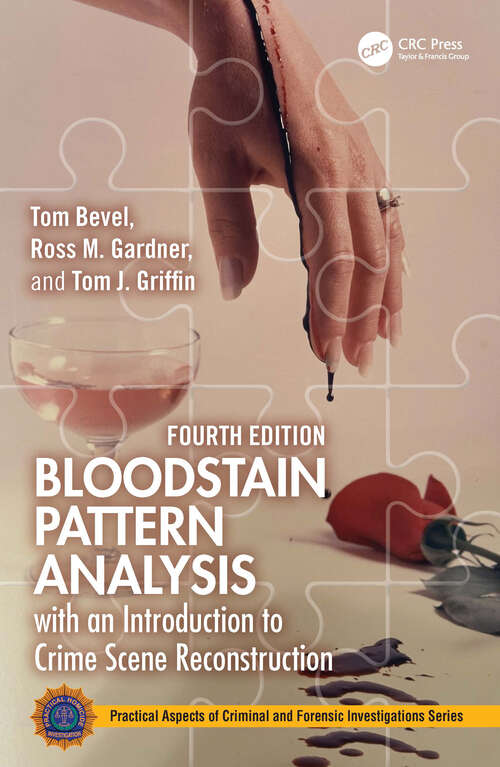
Bloodstain Pattern Analysis with an Introduction to Crime Scene Reconstruction (Practical Aspects of Criminal and Forensic Investigations)
Laws and statutes, Science and technology, Law and crime
Synthetic audio, Automated braille
Summary
Blood Stain Pattern Analysis with an Introduction to Crime Scene Reconstruction, Fourth Edition provides criminal investigators and forensic scientists with a complete and comprehensive handbook on bloodstain pattern analysis.Bringing over 90 combined years of practical experience—and thousands of cases worked… collectively—the authors explain the complex mechanics of blood spatter analysis, including anatomical issues relative to bloodstain pattern analysis, a discussion of blood and the circulatory system, and the nature of bleeding associated with various traumatic and non-traumatic injuries. The book also details specific methodologies for crime scene analysis and reconstruction, explaining the proven methodology involved in the process. Such methodology is built upon scientific method and provides focus and structure to the analyst as they evaluate evidence and conduct their work and the investigation.Finally, all chapters are fully revised and updated to address the latest taxonomy and terminology, with over 400 full-color photographs included to illustrate the dynamics of bloodstain pattern analysis.Key features: Presents a specific and detailed taxonomy of bloodstain pattern characteristics, outlining recently updated NIST’s OSAC terminology Includes two full-color fold-outs Decision Map to guide analysts through the classification process Details the theory, principles, and methodology for crime scene reconstruction Expands the bloodstain on clothing chapter, to include new developments in the understanding of bloodstain features and characteristics on cloth Offering practical advice and tips for new and experienced professionals alike, Blood Stain Pattern Analysis with an Introduction to Crime Scene Reconstruction, Fourth Edition offers readers the necessary tools to guide and focus any investigative effort.